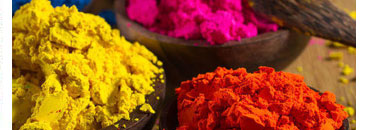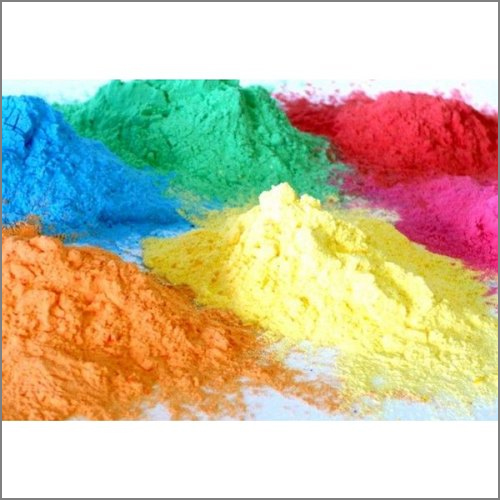Reactive Dyes
Bifunctional Reactive Dyes
There are two reactive groups in Bi functional Dyes. These two reactive groups are well known for their excellent dyeing activity. But bifunctional Dyes with excellent dyeing capacity can be only created through correct selection process of appropriate reactive groups and appropriate chromophores. A few bifunctional reactive dyes had been developed which carried mono-chlorotriazine and sulphato ethyl sulphone reactive.
As Bi functional Dyes contain two reactive groups either identical in nature or not so these dyes have higher degree of fixation over all other kinds of dyes.
The main features of Bifunctional Dyes
- The stability that is exist in the dye-fiber bond between the Vinyl sulphone group and cellulose against acid hydrolysis gives extra stability to these dyes in the acidic environment of the industry and makes the dyeing effect more lasting.
- The portion of bi functional dyes that doesn't fix during the dyeing process can be removed easily. This is because of the low substantivity of the hydrolysis dye. This reduces the risk of staining of the adjacent whites.
- The leveling properties are also excellent. The reproductivity of dyeing is also good.
- The fastness quality is also get improved.
Fabric Reactive Dyes
Fabric reactive dyes are processed using best available techniques by our experienced team members. These can be availed in varied colors including red, yellow, orange, blue, black and others as per the exact demands and choices of clients. Prepared under the firm direction of experienced quality controllers, these are known for their various salient features including precise pH value, longer shelf life and purity. These are processed through chemical reaction and basically these are highly colored substances find their wide applications for tinning textiles.
Textile Dyestuff
Textile dyes belong to Bronze Age. If we compare this to the 21st-century, these constitute an important segment of the whole business of specialty chemicals. Dyes that are used by the textile industry are now mostly synthetic. They are mostly derived from two sources namely, coal tar and petroleum-based intermediates. These dyes are marketed as powders, granules, pastes or liquid dispersions. The concentrations of active ingredients typically ranges from 20 to 80 percent. These are now characterised as new dyes and are regularly developed for meeting the demands of new technology, new kinds of fabrics, detergents, advances in dyeing machineriest, along with overcoming the serious environmental concerns posed by some existing dyes. Another important factor is the fact that almost all the products are subjected to seasonal demand and variation. Industrial textiles Dyes must rise up to meet all these new and specific technical requirements.
With the fast changing of the product profile of the textile industry, from high-cost cotton textiles to the durable and versatile synthetic fibres, the pattern of consumption of these dyes is also going through rapid changes. Now a days, Polyesters account for a major part of dye consumption. Accordingly, disperse dyes, that is used in Polyesters, are also projected to grow at a faster rate.
Vinyl Sulfone Dyes
Fabric Dyes
Dyeing is the process of adding color to textile products like fibers, yarns, and fabrics. Dyeing is normally done in a special solution containing dyesand particular chemical material. After dyeing, dye molecules have uncut chemical bond with fiber molecules. The temperature and time controlling are two key factors in dyeing. There are mainly two classes of dye, natural and man-made.
The primary source of dye, historically, has generally been nature, with the dyes being extracted from animals or plants. Since the mid-18th century, however, humans have produced artificial dyes to achieve a broader range of colors and to render the dyes more stable to resist washing and general use. Different classes of dyes are used for different types of fiber and at different stages of the textile production process, from loose fibers throughyarn and cloth to completed garments.
Acrylic fibers are dyed with basic dyes, while nylon and protein fibers such as wool and silk are dyed with acid dyes, and polyester yarn is dyed withdisperse dyes. Cotton is dyed with a range of dye types, including vat dyes, and modern synthetic reactive and direct dyes.
Reactive Blue Dye
- Minimum Order Quantity: 25 Kilogram
- Usage/Application: Textile Industry
- Types: Mixed Dyes



